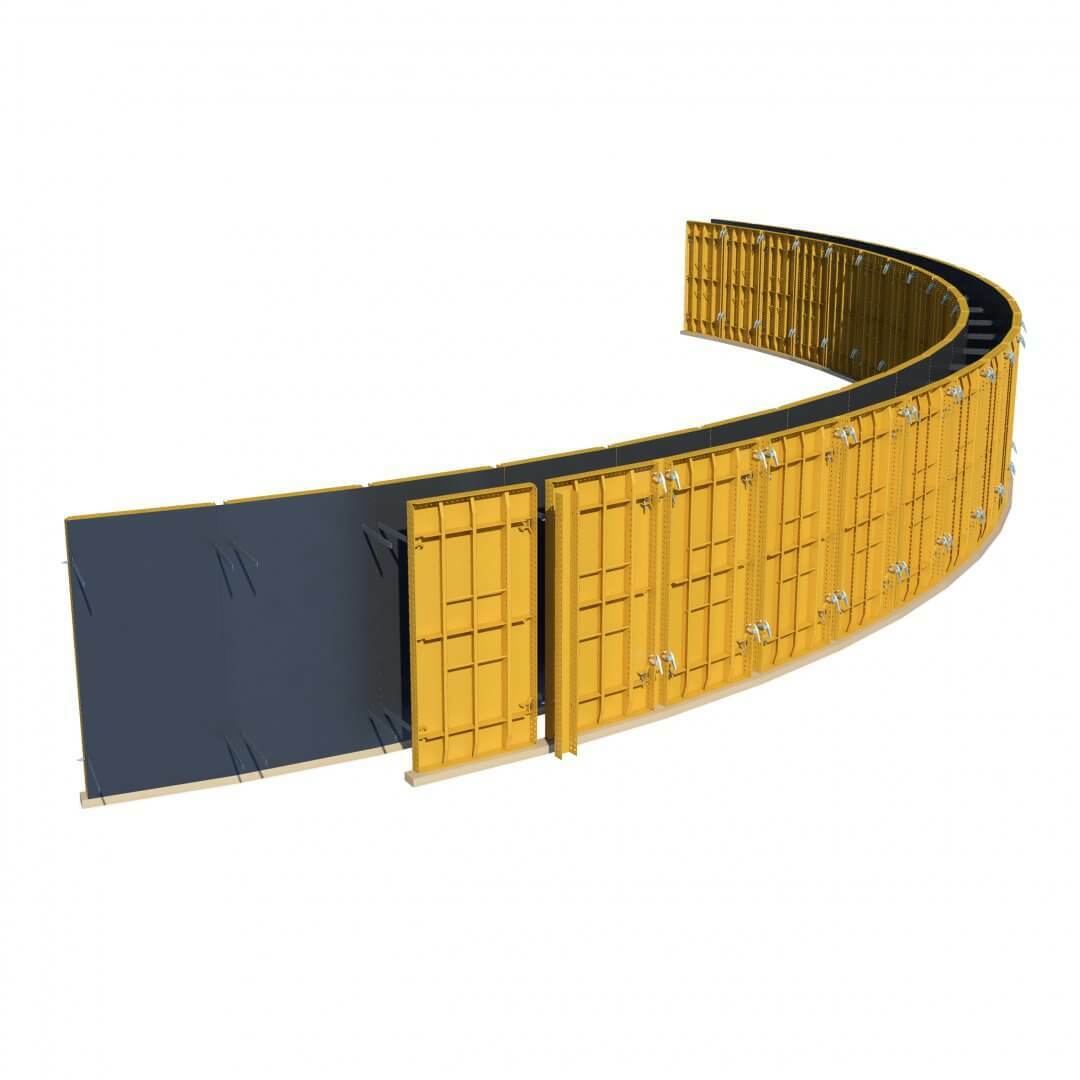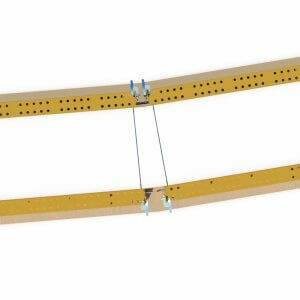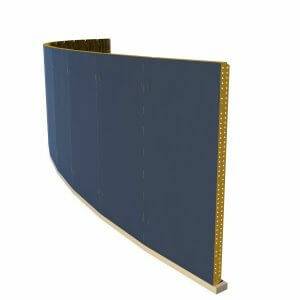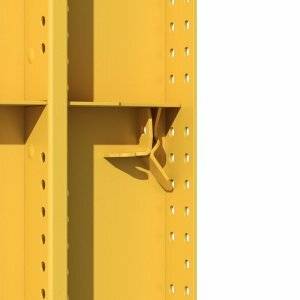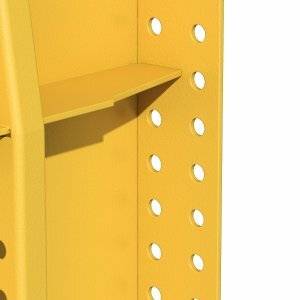Handset Radius Formwork
Round tanks and curved walls are an excellent application for EFCO’s HAND-E-FORM® system. Standard HAND-E-FORM panels used with HAND-E-FORM flexible panels will form the required radius. The size of the standard panel will vary according to the radius and amount of chord allowed.
Easy-to-Use Forming System
The HAND-E-FORM® Forming System is easy to use and the most versatile handset forming system on the market. Inexperienced workers quickly learn the simple mechanics of this system. Unlike competitive systems, HAND-E-FORM panels are lightweight and conveniently sized, so even the largest panel can be set and stripped by just one worker.
FEATURES AND BENEFITS
- Set and stripped with one worker
- Versatile handset forming system
- Easy to use
- No wood walers required
- Reduced number of ties with greater tie spacing
- Single joint finish
How do I form a Round Tank?
The first step to form a round tank is planning your work. An engineer can calculate the inside and outside circumference of tank walls. Next, select the standard panel module for the tank depending on the allowable chord dimension. Most tanks are formed with a 24″ chord but sometimes a smaller tank requires a 16″ or 12″ panel. Some very large tanks may use a 48″ chord.
A normal assumption is that a 2″ flexible panel will be used between each 24″ modular panel on the inside of the wall. Completing the outside plating plan requires using wider flex panels in order to make up the difference in the circumference of the inside and outside of the tank.
HAND-E-FORM vs Plywood?
All-steel EFCO HAND-E-FORMS cannot be matched for durability. With proper care, the steel face sheet of a HAND-E-FORM panel will last a lifetime. HAND-E-FORM face sheets are five times more dent resistant than composite sheets and can withstand the demands of being used over and over again on your jobsite. Add it all up—maximum durability, less labor to clean and maintain, plus the best in quality concrete finish equals the benefits of steel.
Can an inexperienced worker put together the HAND-E-FORM System?
The HAND-E-FORM® Forming System is an easy-to-use system. It is the most versatile handset forming system on the market today. Inexperienced workers quickly learn the simple mechanics of this system. Unlike competitive systems, HAND-E-FORM panels are lightweight and conveniently sized. Even the largest panel can be set and stripped by just one worker.
How long should concrete cure before removing forms
The duration of time between placing concrete and removing/stripping formwork and shoring depends on a variety of factors, but it is ultimately based on age criteria and the minimum concrete strength determined by the project engineer/architect (reference ACI 347-R14; 5.7.1).
